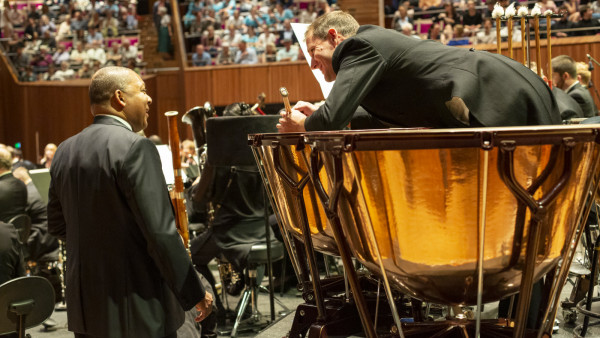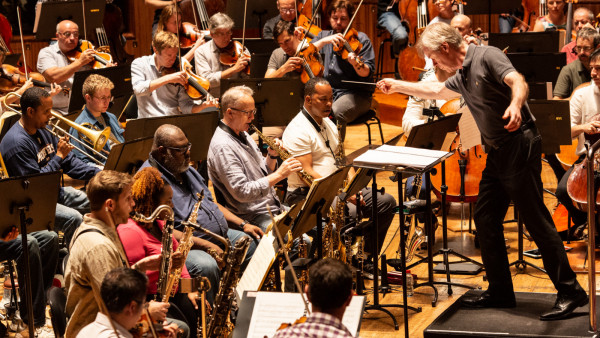Wynton Marsalis takes audience on a classic journey through jazz history
In 2016, when the New York Philharmonic Orchestra premiered Wynton Marsalis’s fourth symphony, The Jungle, the orchestra’s short rehearsal schedule, combined with the score’s length and intricacy, meant it performed only five of the six movements.
Luckily, the Australian premiere performances with the SSO featured the complete piece. It is important because The Jungle’s opening movement, which was discarded for the world premiere, sets the pace for the rest of the piece with its rough-and-tumble energy and engaging cut-and-thrust dialogue between jazz ensemble and symphony orchestra.
Like his Swing Symphony (No 3), The Jungle is ambitious in scope and complexity. It is Marsalis’s love letter to New York: its vibrancy, cosmopolitan character and disparate musical heritage.
It is a challenging task to integrate jazz, swing and blues idioms into classical music forms. Marsalis is one of the few to succeed. He has a sure grasp of larger-scale structures and knows how to use the resources of a symphony orchestra with ingenuity and imagination. Too often in jazz-meets-classical-music concerts, the orchestra provides vapid, mawkish accompaniments. Here, the contributions of the jazz group and orchestra were seamlessly integrated and equally inventive.
The Jungle takes the listener on a journey through jazz history. The burnished brass tunes and jaunty orchestral figures of The Big Show recalled both the music of Gershwin and the swinging big bands of the 1930s, while the funky rhythmic grooves of La Esquina paid homage to Afro-Cuban music. Smoothly executed saxophone solos and graceful, sweet-toned string phrases established a mood of seductive Ellingtonian sophistication in Us.
In his program note, Marsalis says the work’s finale, Struggle in the Digital Market, asks whether the city will find solutions or perish. Musically, his conclusion is equivocal. Following a frenetic, thrilling full ensemble climax, he ends the work quietly with a series of mournful trumpet solos.
Programming French-American composer Edgard Varese’s Ameriques (1918-21) alongside Marsalis’s new symphony was a masterstroke. Both works are inspired by New York’s bustling energy but Varese’s stimulus is oblique rather than explicit, abstract rather than programmatic.
Scored for a massive 100-piece orchestra, Ameriques has few equals in its scale and audacity. It certainly owes a debt to Stravinsky’s The Rite of Spring but Varese’s approach to texture, timbre, rhythm and orchestration created a unique sound-world.
Conductor David Robertson and the orchestra’s laser-like clarity, focused precision and strong dynamic contrasts realised the work’s distinctive mix of haunting quietude, restless energy and colossal power.
Wynton Marsalis and the Jazz at Lincoln Centre Orchestra perform in Melbourne on February 28 -March 2 and in Brisbane on March 4-6.
by Murray Black
Source: The Australian


